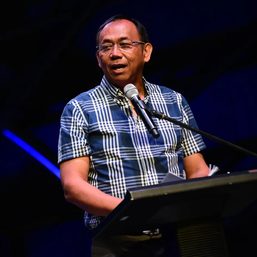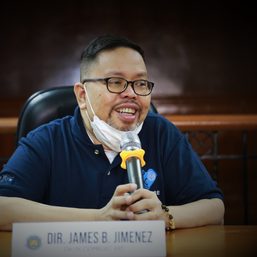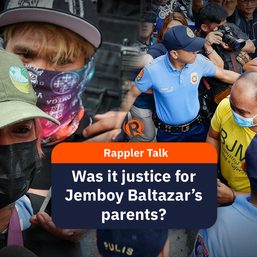SUMMARY
This is AI generated summarization, which may have errors. For context, always refer to the full article.
![[Newsstand] The debates in 2016 were the game changer](https://www.rappler.com/tachyon/2021/10/TL-2016-debates-128-.jpg)
Right after the 2016 elections, President-elect Rodrigo Duterte’s social media campaign immediately claimed responsibility for his victory. But here’s a proposition: The real game changer of the 2016 elections was the decision of the Commission on Elections (Comelec) to conduct presidential debates for the first time since 1992.
The three debates drew large audiences and created indelible images (including the vivid but ultimately illusory picture of a flag-waving Rodrigo Duterte on a jet ski); they sharpened contrasts between candidates and dominated multiple news cycles. They also allowed the less well-funded candidate – or, in the case of the lone vice presidential debate, the lesser known candidate – a free national platform to make the most of.
Many factors contributed to Duterte’s victory, and to that of Leni Robredo too; it would be foolish or unrealistic to assign all credit or blame to just one variable. But as a political strategist for a presidential candidate told me a few hours before the start of the first debate, in Cagayan de Oro, the Comelec debates were changing the game even as we spoke.
I understood that statement then to mean, first, that the monthly debates gave a structure, a natural shape, to the 90-day campaign, which in turn created an opportunity for candidates to create a winning narrative; and second, that the first official debates since 1992 forced the candidates to confront each other. The possibility that confrontation would lead to a revelation of strength or weakness was part of the promise of the 2016 debates.
After the third debate, which was one of the most watched shows on television that year, I understood the game-changer statement in yet another context: The game had changed because the debates had created the largest audiences for presidential elections in our history.
High ratings
The first debate, hosted by GMA Network and the Philippine Daily Inquirer, aired on February 21 to high ratings. The AGB Nielsen rating for Mega Manila was 25.3%, topping all the shows in the afternoon bloc the debate was classified in. The nationwide rating was 23.8 percent.
The second debate, hosted by TV5, the Philippine Star, and BusinessWorld, aired on March 20. The ratings were not as high: 11.2% for Mega Manila, 8.5% nationwide. In my layman’s understanding, this was because of the limits of the reach of the host network. But that debate in Cebu was by far the most contentious of the debates, and maybe for that reason the most consequential. It also turned the debate moderator, Luchi Cruz Valdes of TV5, into a figure of sympathy on social media.
The third debate, hosted by ABS-CBN and Manila Bulletin, took place in Dagupan and aired on April 24, just a couple of weeks before Election Day. The ratings were remarkable: 27.9% in Mega Manila, 40.6% nationwide. Where the Cebu debate had turned into a contest between Jojo Binay, who sought to bring documents to the debate stage, and the rest of the candidates who wanted to follow the rules agreed upon earlier, the Dagupan debate was for the most part a high-profile skirmish between Duterte and the candidate of the Aquino administration, Mar Roxas.
Survey rankings
It is not possible to draw a straight line from the debates to the surveys; the most that can be said is that Social Weather Stations and Pulse Asia conducted election preference polls that were roughly in sync with the debate calendar. Each of the two main survey institutions was able to poll voting-age Filipinos at least once a few days after each of the debates.
But it stands to reason, and validated by our common experience with public discourse, that the debates which were widely watched, heavily discussed, and enthusiastically shared or turned into memes on social media had an impact on the surveys. Or, rather, that the narratives being strung together through the debates, the confrontations that riveted public attention, the large audiences that were paying sustained attention to the campaign, found a reflection in the surveys.
Going into the first debate on February 21, Pulse Asia found Grace Poe (26) and Binay (25) statistically tied for the lead, with Duterte at 21. The Pulse Asia and SWS polls conducted in the first week of March, or more than a full week after the Cagayan de Oro debate, showed Poe consolidating her lead (28 and 27, respectively), with Binay dropping back (21, 24). But lawyer Tony La Viña, who was advising the Poe campaign, noted that the folksy and foul-mouthed Duterte had scored points simply by showing up in formal wear.
The week of the second debate, Pulse Asia was in the middle of field work for another survey; the result showed Poe at 26, Duterte at 25, Binay at 22. In the Cebu debate, Binay took a great risk: He gambled on a high-stakes maneuver – or stunt, depending on one’s point of view – and brought stacks of what he said was evidence to disprove the allegations of corruption levied against him. But bringing documents to the debate floor was expressly forbidden in the extensive pre-debate negotiations the Comelec supervised; Binay’s attempt was resisted by Roxas, Poe, and Duterte, and caused a long delay that was captured on TV and radio and on social media. (Miriam Defensor Santiago missed the debate because of health reasons.) Duterte, in particular, stood out, not only because of his firm, articulate objection but also because he made a reasonable and unanswerable suggestion: Nothing prevented Vice President Binay, he said, from presenting the documents if he were to call a press conference immediately after the debate.
Voice of reason
In my reckoning, this was the moment when the image of Duterte as a seasoned lawyer, a voice of reason, emerged. (Yes, I know. It didn’t last.) I was at the venue, and saw how this version of Duterte helped lower the temperature in the tense, smaller-than-expected hall. The surveys after the Cebu debate suggest that Duterte gained the most, while Binay, bearing the consequences of his gamble, began a long downward slide. The SWS poll of March 30 to April 2 found Duterte now clearly ahead of everyone else, at 27. Poe had dropped to 23, Binay to 20. The Pulse Asia survey at about the same period found roughly the same picture: Duterte at 30, Poe at 25, Binay at 20.
The third debate had the largest audience. It is remembered now for Duterte’s remarks, since disavowed as a mere joke, that he would bring the Philippine flag to the Spratlys in a jet ski and plant it in our territory in full view of Chinese encroachers. But the debate’s highlights included the return of Santiago to the debate floor and the running skirmishes between a much more impassioned Roxas and a game Duterte.
The Pulse Asia poll taken the week before the Dagupan debate had Duterte at 30, Poe at 22, Binay down to 17 – and Roxas at 20. The Pulse Asia survey taken almost immediately after the debate showed Duterte advancing to 33 and Roxas taking second spot with 22 – possibly reflecting the dynamic of their spirited exchanges of the third debate.
Other factors were in play, of course. But in a contest where he had less of almost everything – less money, fewer ads, less preparation, fewer political allies and even fewer endorsers – the debates allowed him a free platform and favorable media coverage. The game HAD changed, and he made the most of it. – Rappler.com
Veteran journalist John Nery is a columnist and editorial consultant of Rappler.
Add a comment
How does this make you feel?



![[New School] Tama na kayo](https://www.rappler.com/tachyon/2024/02/new-school-tama-na-kayo-feb-6-2024.jpg?resize=257%2C257&crop=290px%2C0px%2C720px%2C720px)
![[Only IN Hollywood] After a thousand cuts, and so it begins for Ramona Diaz and Maria Ressa](https://www.rappler.com/tachyon/2024/02/Leni-18.jpg?resize=257%2C257&crop=262px%2C0px%2C720px%2C720px)
There are no comments yet. Add your comment to start the conversation.